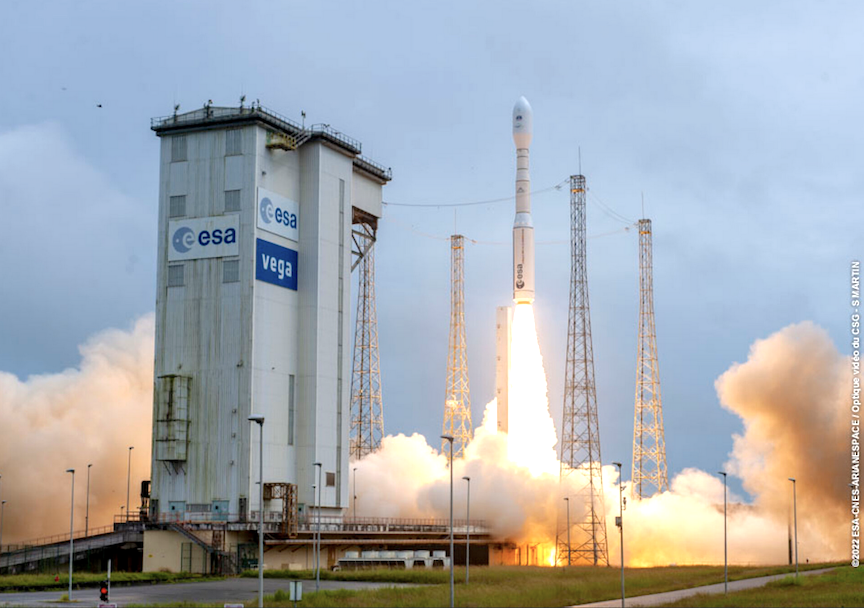
©ESA/CNES/Arianespace/Optique Video du CSG/S Martin
Atos is supporting the European Space Agency (ESA) in its planned improvements for Vega-C, the new single body rocket, whose inaugural launch took place on July 13, 2022. Atos contributes to this program by providing key testing equipment for the main launcher and is also providing testing equipment for the “Space Rider” reusable spacecraft which will be launched on Vega-C, enlarging versatility and space transportation capabilities of this new European launch system.

Vega-C is a new generation rocket, more powerful and flexible than its predecessors and with more capacity to carry satellites and nanosatellites. It supports Europe’s global competitiveness by enabling key space missions which meet the needs of local institutions and industry.
Atos is part of the team that develops a test facility for the Vega-C rocket in the frame of the launcher’s Competitiveness Improvement Activities. The Atos team of space experts based in the Czech Republic supplies a system called “Vega Navigation Ground Support Equipment”, specifically designed to test the launcher’s new Inertial Reference Unit. In addition, the Atos experts based in Romania are contributing to the “Space Rider” spacecraft, which will be launched on top of Vega-C and which will be put into orbit for about 2 months before coming back to Earth. This uncrewed robotic laboratory will be Europe’s first reusable space transportation system.

Instruments are increasingly sophisticated and hard to test. Utilizing an innovative concept based on the RF SCOE and our Protection Unit for Satellite Testing (ProUST) platform, the Payload EGSE is an extremely flexible solution to reliably test the instruments of navigation, Earth Observation and telecom satellites. It features a test case set-up that supports a large variety of satellite / subsystem configurations and respective test requirements.
More specifically, the Atos team is implementing the Electrical Ground Support Equipment which supports integration and validation for various sub systems of “Space Rider”. This equipment includes a Central Checkout System, Special Checkout Equipment for Power, Radio Frequency, Telemetry & Telecommands, an Umbilical Validation Tool, a Solar Array Simulator, as well as many other simulators for various other sub-systems.
“We are proud to offer best-in-class technology – including satellite testing, satellite monitoring and space data analytics – for a wide range of space missions for European, national, defense and commercial customers. It is with great emotion that we watched the inaugural launch of Vega-C, which is an ambitious program and a very good example of successful European cooperation in space!” said Bruno Milard, VP, Head of Business Unit Aerospace & Defense Electronics, Atos.
Romania is a key contributor to the Vega-C program. Romanian experts from various organizations have performed aerodynamic and acoustic tests, verifications, and validations of the Vega-C navigation system, as well as the integration and validation of systems for the Space Rider spacecraft flying with Vega-C.
“Romania’s participation in the ESA launcher program and particularly in Vega-C, Ariane 6 and Space Rider represents a key investment in the future of the Romanian space field. We have opened the way for Romanian organizations to contribute to the realization of the newest European rockets and space vehicles. The collaboration with European integrators and European companies already established in the development of space vehicles has contributed to the development of critical capabilities in our country,” said Dr. Phys. Marius-Ioan Piso, President of the Romanian Space Agency (ROSA).
Atos in Romania is a key competency center for Atos’ global solutions for space. Local teams have extensive experience in the fields of Electrical Ground Support Equipment, Mission Control Systems, Ground Stations and Federated Identity Management.
Atos experts have already been contributing to various other significant ESA and non-ESA missions, such as Euclid, Juice, Proba-3, MetOp SG, Plato, Sentinel 5 & 6 and OneWeb.
